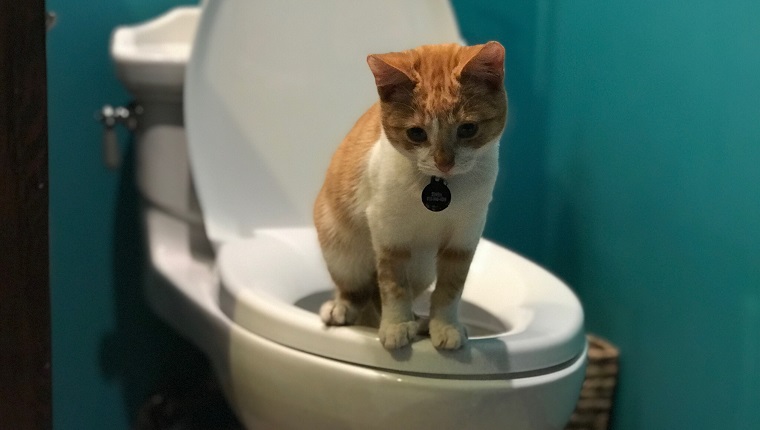Why Flushing Cat Poop Down Your Toilet Isn't a Good Idea - Tips for Safer Disposal
Why Flushing Cat Poop Down Your Toilet Isn't a Good Idea - Tips for Safer Disposal
Blog Article
Have you been on the lookout for advise on Don’t flush cat feces down the toilet?

Introduction
As pet cat owners, it's essential to bear in mind how we throw away our feline pals' waste. While it might seem convenient to flush pet cat poop down the bathroom, this technique can have harmful effects for both the environment and human wellness.
Alternatives to Flushing
Fortunately, there are much safer and extra responsible ways to throw away pet cat poop. Consider the complying with options:
1. Scoop and Dispose in Trash
One of the most usual method of getting rid of pet cat poop is to scoop it right into a biodegradable bag and throw it in the trash. Be sure to utilize a devoted trash scoop and get rid of the waste quickly.
2. Use Biodegradable Litter
Opt for biodegradable pet cat clutter made from materials such as corn or wheat. These litters are eco-friendly and can be securely thrown away in the trash.
3. Hide in the Yard
If you have a lawn, take into consideration hiding feline waste in a designated area far from veggie gardens and water resources. Be sure to dig deep adequate to avoid contamination of groundwater.
4. Install a Pet Waste Disposal System
Buy an animal garbage disposal system particularly designed for feline waste. These systems use enzymes to break down the waste, reducing odor and ecological effect.
Wellness Risks
In addition to environmental problems, flushing feline waste can additionally pose health and wellness threats to humans. Cat feces may consist of Toxoplasma gondii, a bloodsucker that can create toxoplasmosis-- a possibly severe disease, especially for expecting ladies and people with damaged body immune systems.
Ecological Impact
Purging feline poop introduces damaging microorganisms and parasites into the supply of water, positioning a significant risk to marine ecosystems. These impurities can adversely impact aquatic life and concession water high quality.
Conclusion
Liable family pet ownership expands past offering food and sanctuary-- it likewise involves correct waste administration. By avoiding flushing pet cat poop down the bathroom and going with alternate disposal approaches, we can reduce our ecological footprint and shield human health.
Why Can’t I Flush Cat Poop?
It Spreads a Parasite
Cats are frequently infected with a parasite called toxoplasma gondii. The parasite causes an infection called toxoplasmosis. It is usually harmless to cats. The parasite only uses cat poop as a host for its eggs. Otherwise, the cat’s immune system usually keeps the infection at low enough levels to maintain its own health. But it does not stop the develop of eggs. These eggs are tiny and surprisingly tough. They may survive for a year before they begin to grow. But that’s the problem.
Our wastewater system is not designed to deal with toxoplasmosis eggs. Instead, most eggs will flush from your toilet into sewers and wastewater management plants. After the sewage is treated for many other harmful things in it, it is typically released into local rivers, lakes, or oceans. Here, the toxoplasmosis eggs can find new hosts, including starfish, crabs, otters, and many other wildlife. For many, this is a significant risk to their health. Toxoplasmosis can also end up infecting water sources that are important for agriculture, which means our deer, pigs, and sheep can get infected too.
Is There Risk to Humans?
There can be a risk to human life from flushing cat poop down the toilet. If you do so, the parasites from your cat’s poop can end up in shellfish, game animals, or livestock. If this meat is then served raw or undercooked, the people who eat it can get sick.
In fact, according to the CDC, 40 million people in the United States are infected with toxoplasma gondii. They get it from exposure to infected seafood, or from some kind of cat poop contamination, like drinking from a stream that is contaminated or touching anything that has come into contact with cat poop. That includes just cleaning a cat litter box.
Most people who get infected with these parasites will not develop any symptoms. However, for pregnant women or for those with compromised immune systems, the parasite can cause severe health problems.
How to Handle Cat Poop
The best way to handle cat poop is actually to clean the box more often. The eggs that the parasite sheds will not become active until one to five days after the cat poops. That means that if you clean daily, you’re much less likely to come into direct contact with infectious eggs.
That said, always dispose of cat poop in the garbage and not down the toilet. Wash your hands before and after you clean the litter box, and bring the bag of poop right outside to your garbage bins.
https://trenchlesssolutionsusa.com/why-cant-i-flush-cat-poop/

Do you enjoy reading about Don’t flush cat feces down the toilet? Give a comment below. We will be interested to hear your views about this review. We hope that you visit us again before long. Sharing is nice. Who knows, you might be helping someone out. Thanks a lot for going through it.
Automated Marketing Report this page